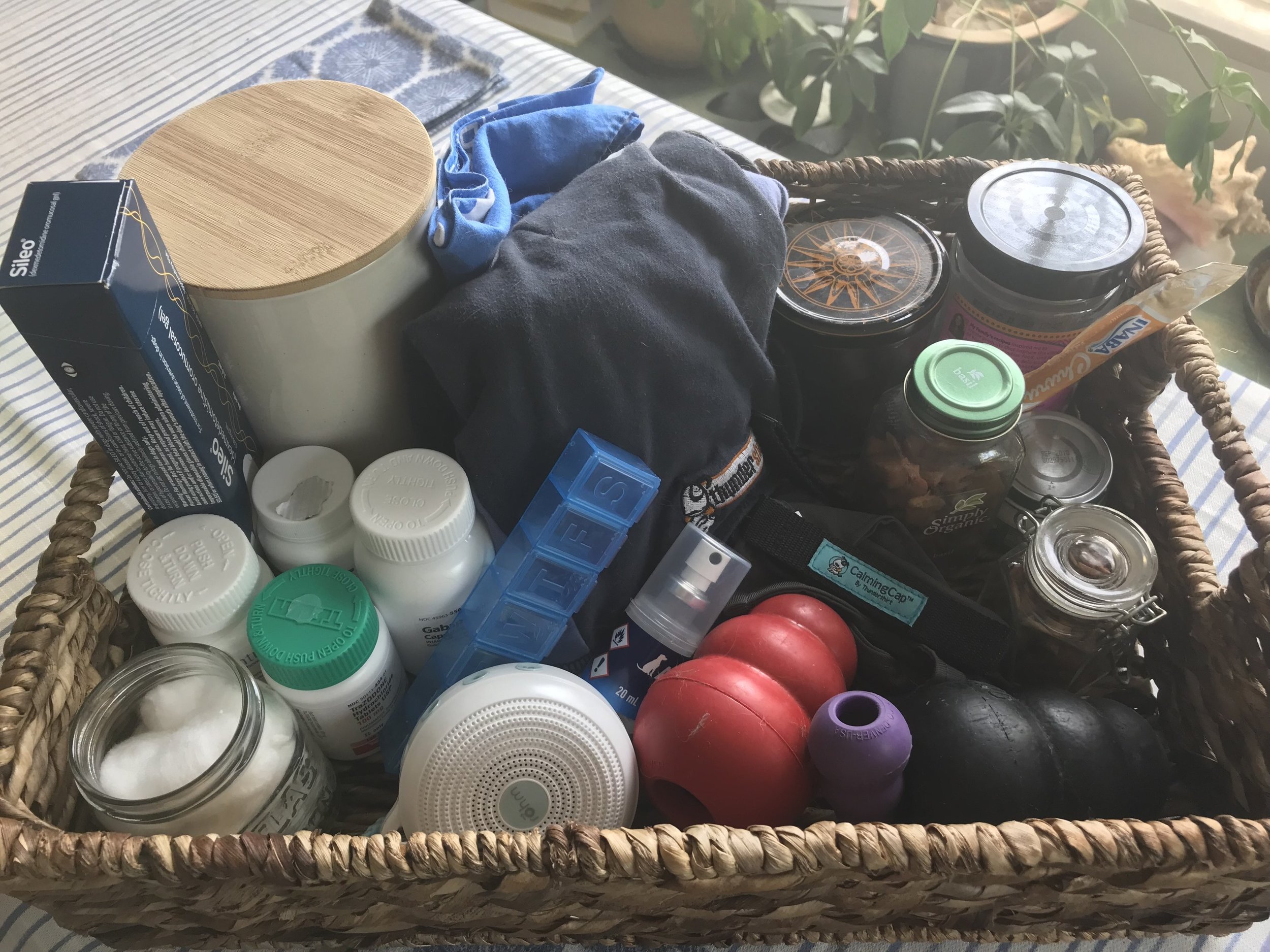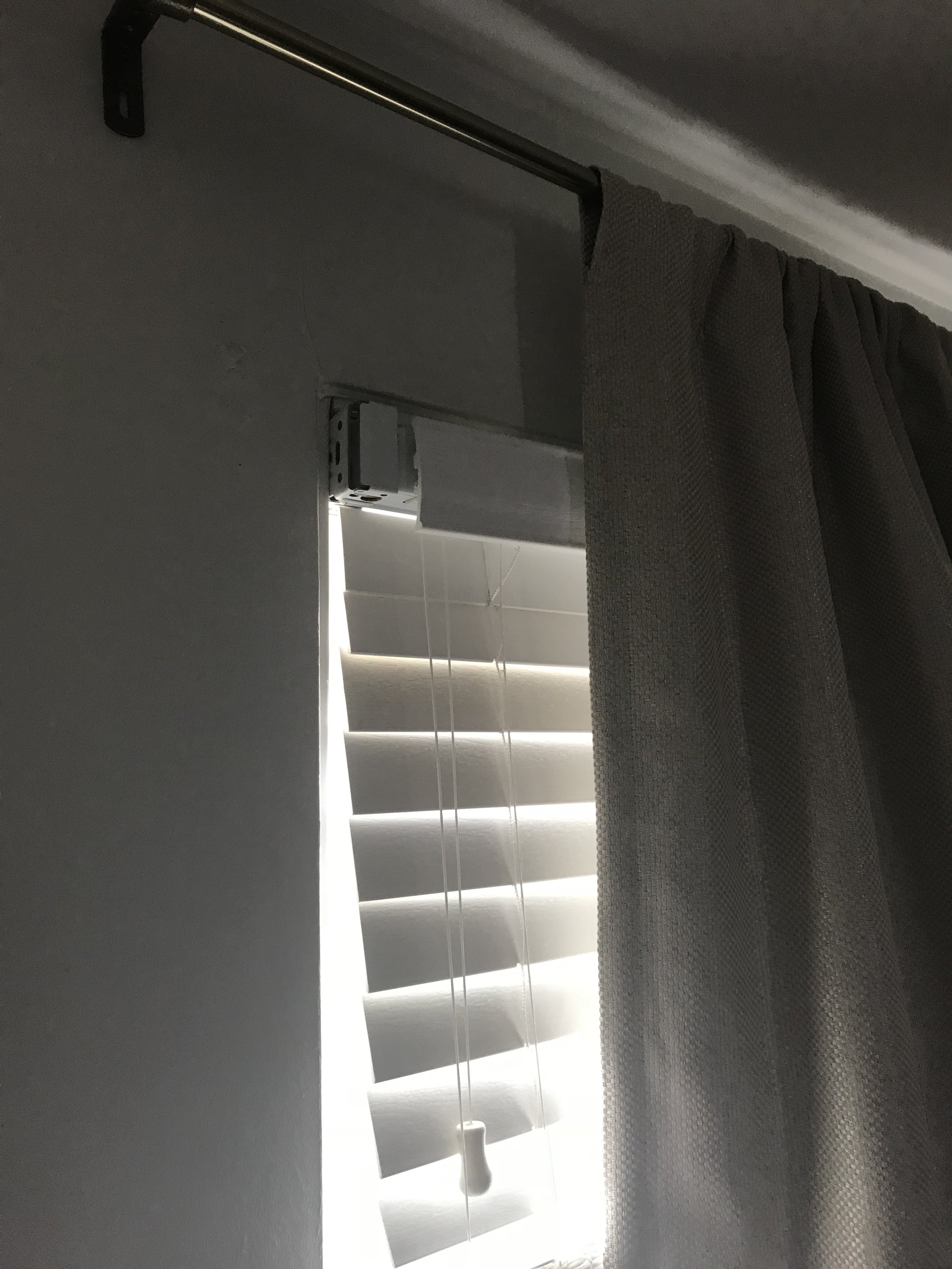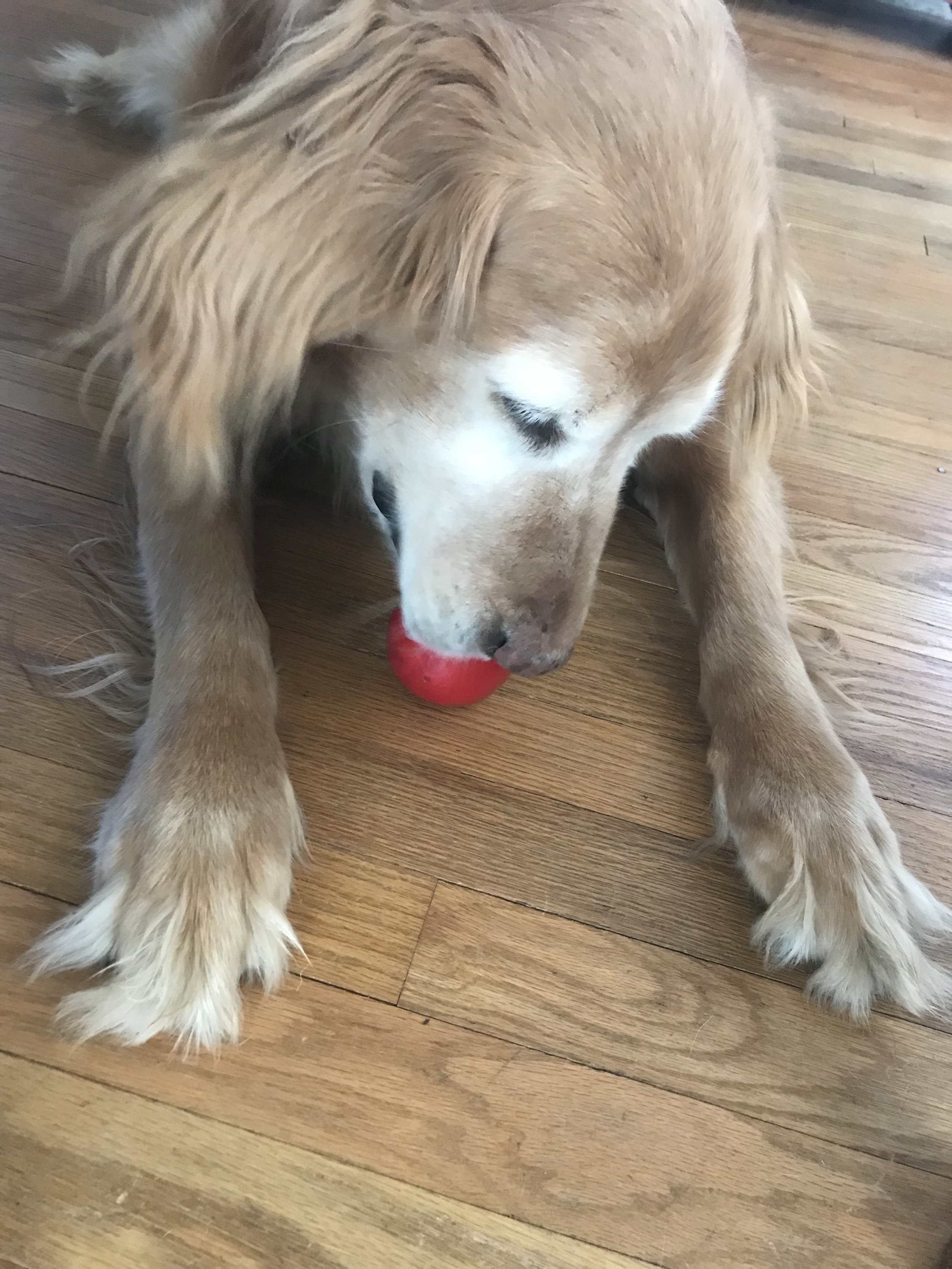SaNctuary Rooms
Create an in-home sanctuary room for your pet to help them relax and remain stress free when access to the entire house is not possible or would cause them fear, anxiety or stress.
Sanctuary rooms are excellent to use for a variety of situations including thunderstorms, introducing new pets to a household, visitors to the home, and when moving or having work done on your home.
Cat Sanctuaries
A cat sanctuary should include:
A comfortable, warm resting space (consider placing in the sun or adding a heating pad or blanket on low, especially for senior kitties)
Multiple vertical spaces, ideally enough for your cat to travel all the way around the room without touching the ground
A scratching post (read more here about the ideal post!)
Toys and food puzzles for mental and physical enrichment
Food
Water in a shallow and wide dish or fountain
A window if your cat enjoys watching birds and bugs outside and does not become overly excited by outdoor animals
An appropriate litter box (learn more here about the ideal litter box!)
A Feliway diffuser (learn about pheromones here!)
A rolled up towel to place under the door to block out noise and smells from the rest of the home
Dog Sanctuaries
A dog sanctuary should include:
A comfortable, preferred resting space
Water
Food puzzle toys for mental and physical enrichment and distraction/counterconditioning
Other toys and things to do
A white noise machine or fan to block out sounds from other areas of the house or noises outside such as trucks, dogs, and thunder
Calming music such as Through a Dog's Ear or other relaxing music
Window film if your dog is becoming too excited by animals, people, or cars outside
Blackout curtains to block lightening
Check out the above products here!!
An example of non-adhesive window cling being used to block the view of the street.
Thunderstorms can be scary!
Be prepared before the first signs of a storm hit (strong wind, rain, and changing barometric pressures) so that your pet is set up for success. Regularly checking a weather app can help!





Signs of fear and anxiety include:
Panting
Pacing and restlessness
Clingy behavior
Hiding
Drooling
Whining
Scratching the floor (like they're trying to dig a whole)
Trying to escape
Decreased or no interest in food or treats
Tail tucked
Dilated pupils
Ears back and flat
Learn more about body language here!
What can you do?
Use yummy treats to distract your pet
Bully sticks to chew on
Cat treats or soft and stinky high value treats to toss your pet each time there is a clap of thunder or flash of lightening
If you have a treat and train, you can use this at night when in bed to easily deliver treats to your pet with the click of a remote.
Stuff Kongs and have them ready to keep your pet busy during the entire storm
Kong stuffers include braunschweiger, cream cheese, canned pet foods, peanut butter and many others. There are many Kong stuffing recipes online.
You can freeze them so they're always ready, just leave enough space in the end to add some room temperature food that your pet will eat right away.
Use tools to block out the noise and light from the storm
White noise machines that plug into the wall by a window or door (wherever the noise is entering) or travel size machines to take on trips or hang on closet or bathroom door knobs
Spa sounds machines
Calming classical music such as "Through a Dog's Ear" or Max Richter's "Sleep"
Closed blinds
Blackout curtains that prevent light from entering the room
If your pet has chosen a preferred space, set the room up for them to enjoy, and don't try to force them to use another space. If they chose the bathroom, that's OK, make it as comfortable as possible for them!
Use tools to help your pet feel more relaxed
Thundershirts may help some dogs and cats feel more relaxed by providing a calming pressure over their body
Bandanas sprayed with the calming pheromone Adaptil can also be beneficial
If trained appropriately, calming caps may help block out scary flashes of lightening
Use all of these tools during times other than scary events so that they don't associate the tools with thunderstorms. Always associate the tools with awesome treats so that your pets learns to love them.
Use medications or supplements from your vet
It's similar to people taking a Xanax or Valium before going to the dentist or having a stiff cocktail or glass of wine before an airplane flight. Medications help take the edge off of anxiety so that the event is less stressful.
Most medications need 1-2 hours to take effects, so make sure you are checking the weather to know whether to give meds before you go to bed or leave for work.
Some pets may need medications daily during thunderstorm season
Avoid the solo use of acepromazine which has been commonly prescribed for pets in the past. It may help make your pet look "calm" but will not address their underlying fear and anxiety.
Talk with your vet about drugs such as trazodone, gabapentin, benzodiazepines, clonidine, and sileo that may be beneficial for your pet.
Do not attempt to medicate your pet without speaking with your veterinarian first. Human doses and drugs work much differently in a pet's body than they do in ours!
It may help to keep your pet's medications organized in a pill box so that you know what their dose is and how much they've already had that day.

